01 Apr April 2019 Yellowbill
President’s Message
April brings migrating shorebirds, hummingbirds and song birds to our area, and this year it also brings the launch of our Beginning Birding Class to the River Center. We’ve teamed with the River Parkway and Conservation Trust to offer a recurring birding class at the River House. This month’s general meeting will be devoted to the class curriculum and signing up volunteers to teach. We would like to offer the class monthly, and will need multiple volunteer leaders, so please join us Tuesday April 9 to learn more about how you can help. FAS has purchased a birdbath fountain, and George Folsom, Gary Gilmore and Judy Johnson installed it (along with bird feeders and a brush pile) at the River Center last week. You can see a video of the completed operating fountain and bird feeders here. We are asking for donations to help cover the $400 purchase price of the fountain. If you would like to contribute you can donate here or send a check to Fresno Audubon Society, PO Box 3315, Fresno, CA 93650.
Our other partnership project with the Parkway, bird surveys of native plant restoration areas, is now under way. Anyone can participate in these surveys. Just follow the protocol listed here. The surveys should be started within an hour of sunrise and completed within 4 hours of sunrise. Just follow the route outlined in the protocol and share your eBird checklist with the Fresno Audubon Society eBird account: fassjrsurvey@fresnoaudubon.org. We will occasionally send out a notice for a planned survey if you would like to see how it works. If you would like to participate and have not yet signed our liability waiver, contact me at rsnow@fresnoaudubon.org.
Another strategic partnership is with the Sierra Foothill Conservancy (SFC) and the Bureau of Land Management. We have two field trips scheduled to SFC properties this month: A Wednesday trip to Fine Gold Preserve and a Saturday trip to McKenzie Preserve. We also have an Introduction to Birding class scheduled at the BLM’s San Joaquin River Gorge property. These partnerships work to extend our reach in the local community.
Thanks to the efforts of Nancy Gilmore and Susan Estep, our social media presence is exploding. We have increased our Facebook engagement from a few hundred to over 5,000 people in just two months. Please check us out on Facebook, Twitter and Instagram.
The 49th Earth Day will be celebrated this year in Fresno on 20 April at Radio Park. Fresno Audubon is a sponsor of the event and we will have a booth dedicated to planting native plants for birds. I hope you will stop by to learn more about how native plants in your yard can contribute to a thriving bird population.
Robert Snow
President
April General Meeting
FAS Birding Class at the River Center
9 April 2019, 7-8 pm
UC Center
Fresno Audubon Society has teamed with the San Joaquin River Parkway and Conservation Trust to offer birding classes to the general public at the Parkway’s River Center. We will initially be offering the classes monthly on weekends, and dates will be determined to fit with the Parkway’s calendar. The purpose of this meeting is to finalize the curriculum for the class and enlist volunteers to teach people about birding. We now have 10 pairs of binoculars to loan for the class, and we have installed a fountain, brush pile and bird feeders on the property to create a birdy location to use for the instruction. Please attend if you have an interest in volunteering for this new Fresno Audubon Society activity.
If you can’t make the meeting you can still volunteer to be part of this project by sending an email to rsnow@fresnoaudubon.org.
We hope to see you on March 12, 2019 at 7:00 at UC Center, 550 E Shaw Ave, Fresno, CA 93710.
Field Trips
Our website has a calendar that allows you to see all the details of an upcoming trip as they become finalized. Included in the details is a link to map showing the meeting point for the trip. The calendar is subscribable, which allows you to integrate it into your electronic calendar. Updates to events will appear as they are made. We encourage you to subscribe. Follow the links within each writeup for more information on destinations and meeting point locations.
April Field Trips
Wednesday 3 April 2019 – Lost Lake Park with Susan Estep
Wednesday 17 April 2019 – Fine Gold Preserve with Robert Snow
Because we can no longer have trips to Black Mountain during the week, this trip has been changed to Fine Gold Creek Preserve. We will meet at the Park & Ride lot at the corner of Highway 41 and Road 145 at 7:45 and then carpool to the preserve, located at 21582 Rd 216 Friant, CA 93626. Fine Gold Creek Preserve is a wooded area featuring many foothill birds, including raptors, woodpeckers and flycatchers. After birding we will eat lunch along the creek.
This trip is a joint effort of Fresno Audubon Society and the Sierra Foothill Conservancy (SFC). You must register for the event on SFC’s website here.
Checklist: binoculars, scope, field guide, snacks, lunch, water, sunscreen, hat
Saturday 27 April 2019 – McKenzie Preserve with Robert Snow
Join Robert Snow and Gary Woods birding the Sierra Foothill Conservancy’s McKenzie Preserve. This foothill property features Golden Eagle nesting on the cliff below the Table Mountain, White-throated Swift, Western Bluebird, White-breasted Nuthatch, Oak Titmouse, and with luck Gray Flycatcher which pass through the area during the last two weeks of April.
This is a joint event with Sierra Foothill Conservancy who are handling registration for the event. To participate, please sign up here. There is no charge for the event.
We will meet at the preserve, 2247 Auberry Rd, Clovis, CA 93619. The event is from 8-12.
Checklist: binoculars, scope, field guide, snacks, lunch, water, sunscreen, hat
April Birding Classes
13 April 2019 – Spring Beginning Birding at the Gorge
Sierra Foothill Conservancy (SFC), Fresno Audubon Society, and the San Joaquin River Gorge Special Recreation Management Area (BLM) have joined forces to offer a birding class that combines instruction, exploration, and fun! Beginning birders will see and learn about spring migratory birds visiting the San Joaquin River Gorge. Birders will discover easy ways to identify migrating and year-round, local birds. The class will include a walk looking for birds in the fall habitat found on the scenic hillsides of the River Gorge. The address of the event is 40060 Smalley Rd, Auberry, CA 93602. Registration is being handled by SFC: Register here. The class will be from 9-11 am.
Bring binoculars, lunch, water and sun protection. There is no cost to attend, and BLM is waiving the normal $5 daily use fee. Fresno Audubon will have binoculars to loan if you do not have your own.
20 April 2019 – Introduction to Birding at the River Center
Fresno Audubon and the River Parkway and Conservation Trust have teamed to offer a recurring Introduction to Birding class at the Coke Hallowell Center for River Studies. Students will learn how to use binoculars, why birding is a fun and valuable hobby, and what resources are available to help you identify birds. After the initial class work you will accompany Fresno Audubon experts on a bird walk around the River Center property including the Hidden Homes Trail. The class will meet at the wisteria arbor just north of the River House. The Parkway is handling registration. Register here. The address of the event is 11605 Old Friant Rd, Fresno, CA 93730. The class will run from 8-10, and children are welcome.
Bring binoculars, snacks, water and sun protection. There is no cost to attend. Fresno Audubon will have binoculars to loan if you do not have your own.
Earth Day Fresno
Earth Day will be celebrated this year on 20 April from 10-4 at Radio Park in Fresno. The mission of Earth Day Fresno is to inspire people to make changes in their daily lives to help restore the ecological health of our San Joaquin Valley and the world. This year’s theme is species protection, a natural fit for Fresno Audubon. come by our booth and learn about planting native plants for birds. The address is 2233 N First St, Fresno, CA 93703
Fresno-Madera Birds
by Jeff Davis
photos by Gary Woods
Including reports for the period of
February 16 to March 15, 2019
A Greater Scaup, a female, at Bass Lake February 21 (ph. RF) was the only one reported this winter.
The Yellow-bellied Sapsucker at Lost Lake Park, first discovered November 20, was present through at least March 9 (JM).
A Cassin’s Kingbird at Scout Island February 23 (JS, BW, ph. BM) may have been the same one reported near Riverbottom Park in January and at River West Open Space Area and Sycamore Island in November.
At least one Black-throated Gray Warbler, a female, remained China Creek County Park at least through February 25 (ph. RS, DH).
Cited Observers: Rob Fowler, Diane Highbaugh, Bruce Mast, Josh McLaughlin, Rick Saxton, Jeff Seay, Bruce Williford, and Gary Woods. m.ob. = many observers, ph. = photographed by.
If you make an interesting observation, we’d love to hear about it. We are especially interested in birds listed as casual or rare on the Fresno Audubon checklist and those found out of season, out of normal habitat, or in unusually large numbers. Please submit reports to Jeff Davis (559-246-3272, jndavis@ucsc.edu), the Fresno County Birders e-mail list, or eBird.
Birds in the News
Links to Recent Articles on Birds
This New Scientifically Accurate Board Game Is for the Birders
Wingspan,” an eclectic new board game that transforms players into avian enthusiasts working to attract visitors to competing wildlife preserves, boasts a level of scientific rigor typically unseen in the gaming world.
As Siobhan Roberts reports for The New York Times, creator Elizabeth Hargrave—a self-proclaimed “spreadsheet geek” and avid birder—crafted “Wingspan” with mathematical precision: Drawing on data from the Cornell Lab of Ornithology’s eBird citizen-science project and All About Birds portal, as well as Audubon’s online guide to North American birds, Hargrave made a massive spreadsheet detailing information such as habitat, wingspan, red-list status and diet. At one point, the document reached a staggering size of 596 rows by nearly 100 columns. Read more…
Study finds people who feed birds impact conservation
People in many parts of the world feed birds in their backyards, often due to a desire to help wildlife or to connect with nature. In the United States alone, over 57 million households in the feed backyard birds, spending more than $4 billion annually on bird food.
While researchers know that bird feeding can influence nature, they do not know how it influences the people who feed those birds.
“Given that so many people are so invested in attracting birds to their backyard, we were interested in what natural changes they observe at their feeders beyond simply more birds,” said Ashley Dayer, an assistant professor in the Department of Fish and Wildlife Conservation in the College of Natural Resources and Environment at Virginia Tech. “In particular, we wanted to know how they respond to their observations. For example, how do they feel if they see sick birds at their feeders, and what actions do they take to address these observations?” Read more…
How birds become male or female, and occasionally both
The highly unusual “semi-identical” Australian twins reported last week are the result of a rare event. It’s thought the brother and sister (who have identical genes from their mother but not their father) developed from an egg fertilised by two different sperm at the same moment.
In humans, it’s the sperm that determines whether an embryo is pushed along a male or female development pathway. But in birds, it’s the other way around. Eggs are the deciding factor in bird sex.
There are other fascinating aspects of bird sex that are not shared by humans. Female birds seem to have some capacity to control the sex of their chicks. And occasionally a bird that is female on one side and male on the other is produced – as in recent reports of this cardinal in the United States. Read more…
For this beautiful bird, life is better with zygodactyl feet
Red-breasted sapsuckers are so named because most of their diet is sap, but they also love to indulge in fruits as an extra sweet treat. If you look closely at how this bird is gripping the apple, you’ll notice something interesting about its feet.
The red-breasted sapsucker is a member of the woodpecker family, and most species of woodpecker — as well as owls, parrots and ospreys — have zygodactyl feet. This is a type of foot structure in which the two middle toes (toes 2 and 3) point forward and two outside toes ( toes 1 and 4) point back. This clever foot formation, which can look like an X or a K, allows birds to grip things more efficiently. For owls and ospreys, it gives the bird exceptional hold on wriggling prey. For woodpeckers, it gives them the ability to cling easily to vertical tree trunks. And in parrots, it provides an amazing amount of dexterity when handling food items or navigating branches in a tree canopy. Read more…
Welcome to Birdpunk: A Subculture of a Subculture
It’s the evening golden hour at the John Heinz National Wildlife Refuge at Tinicum. A whirlwind of swallows swims through the soft light, chasing midges into a frenzy. Nearby on a platform a handful of birders scans the dimming sky, exposed to the marsh and its blood-thirsty elements.
In plain T-shirts and khakis, the group blends into the woods-y backdrop—with two exceptions. Caleb Hunt, a bookkeeper for an adult-entertainment boutique, rocks a Philly Punx tank top with a fanged, horned Benjamin Franklin splashed across the front. Next to her, Tony Croasdale, the leader of today’s walk, sports an aviary of skin art. A Swallow-tailed Kite, Belted Kingfisher, Scissor-tailed Flycatcher, Greater Racket-tailed Drongo, Scarlet Tanager, and three types of vultures bedeck his legs, collarbone, and arms. Read more…
Keeping Backyard Birds Safe
UNTIL 2005, A SMALL SONGBIRD called the greenfinch was common across Great Britain. Today, its numbers have plunged by 35 percent due to the emergence of a disease called finch trichomoniasis. Usually transmitted at backyard feeders, finch trichomoniasis has not yet been detected in the United States. It has, however, been found in Canada’s Atlantic Provinces, where it has killed purple finches and American goldfinches. Biologists believe it could move easily into this country, where it would join other deadly diseases already spread at feeders, including salmonellosis, aspergillosis, conjunctivitis and avian pox.
Despite these threats, Travis Wilcoxen, a biologist at Millikin University in Illinois, says people do not need to stop feeding birds. But Wilcoxen, who has studied feeder birds for many years, adds that backyard birders should take steps to minimize the risks. “Take your feeders down once a week and soak them in a bucket of bleach solution,” he says. “Rinse them and let them air dry before you fill them up again.” He also recommends putting out fewer feeders and spreading them out. “Place them in different parts of your property,” he says, and only put out the amount of seed that will be eaten in a couple of days. Read more…
Member Photographs
Fresno Audubon members have been submitting some really terrific photographs to this column. If you would like to add yours to the mix, please send your photo in jpeg format to rsnow@fresnoaudubon.org with a brief description, where the photo was taken and how you want the photo credit to read. Birds may be from anywhere. Limited space may restrict publication to a later issue. We now have an Instagram site (@fresnoaudubon), and we will showcase photos there as well.
Julia Baisch
Taken at the Coke Hallowell Center for River Studies 12 March 2019
Clayton Dahlen
Taken in Woodward Park
Taken at Quail Lakes
Taken at Quail Lakes
Nina Jones
Taken in the foothills March 2019
Taken at Bass Lake 24 March 2019
Taken on Road 208 25 March 2019
Taken in the foothills March 2019
Larry Parmeter
Taken at Avocado Lake 15 March 2019
Nathan Parmeter
Taken in San Juan Capistrano, CA in December 2018 at the San Juan Capistrano Mission
Taken in December 2018 at Lake Artemesia in College Park, Maryland





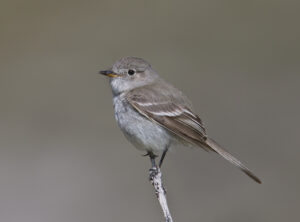





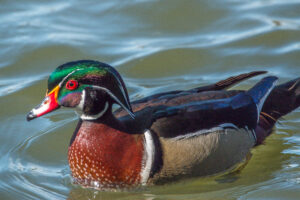
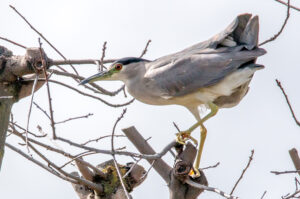
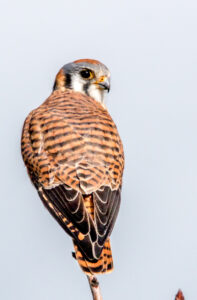

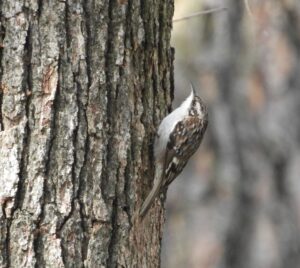

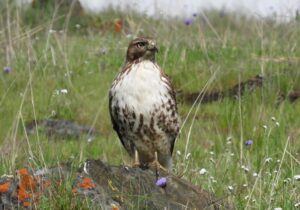
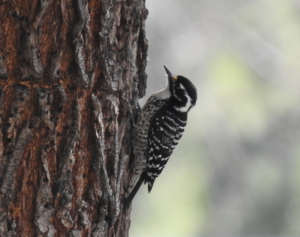

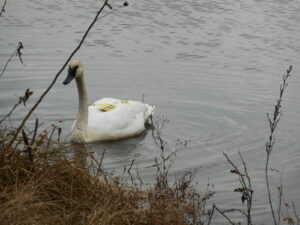

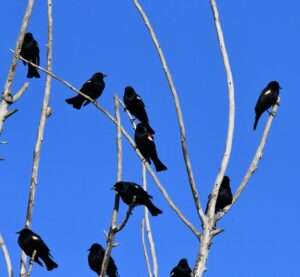
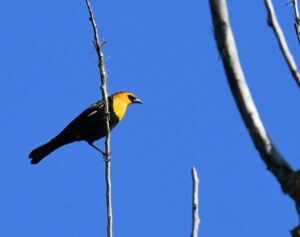
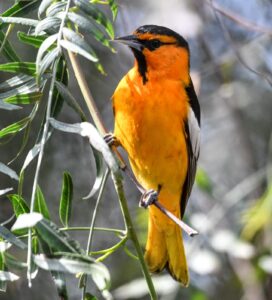
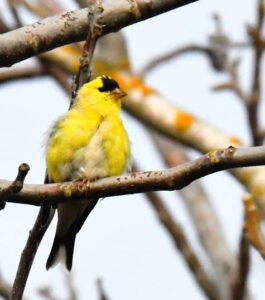
Sorry, the comment form is closed at this time.